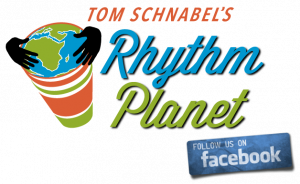I was music director of KCRW (1979-1991) we had a dedicated African show (The African Beat) and often featured African music on other programs as well. We gathered South African music wherever we could: from Jo’Burg’s Kohinoor Store, from a woman named Di Brukin who brought us the latest SA grooves when KCRW was still on the John Adams Middle School Campus in 1981-1984. Roger Steffens, host of the popular Reggae Beat show (1979-1989), was sending Paul Simon the latest music from The Cockerel Boys, Kwa Thema High Jumpers, Ladysmith Black Mambazo, and Boyoyo Boys on cassettes. Thus, inspiring Simon to record his epochal Graceland album in 1985. We featured a lot of other Zulu Men’s Hostel Choirs too, such as the lesser known Abafana Baseqhudeni. Plus, lots of mbaqanga music–the infectious joy of zulu jive. All this was during the period where Mandela was incarcerated in his small prison cell on Robben Island, a former leper colony and animal-quarantine center. Black South Africans were during the 1980s acutely aware of Nelson Mandela and the ANC (The African National Congress) that he lead. And music was a weapon against apartheid. We see this in the historic documentary Rhythm of Resistance, shot underground and clandestinely in the mid 1970s.
I once interviewed writer Rian Malan on Morning Becomes Eclectic after his book My Traitor’s Heart was published. Son of D.F. Malan and his powerful Afrikaner clan, his father was the architect of apartheid, which started in 1948. Rian Malan loved the exuberance of black South African culture, zulu jive music and the joy it inspired. In this famous book he also wrote of the hatred and criminal horror inspired by his father’s policies. The irony of it all was not lost on me.
On this week’s Rhythm Planet, we feature more of the music recorded during the tumultuous 1980s. I am proud of KCRW’s early embrace of not only South African music but also debuting King Sunny Ade, Fela Kuti, and countless other African bands that were to become much more popular. When we started Morning Goes Makossa, KCRW’s first dedicated African program in 1980, African records were hard to get and few people had ever heard any African music let alone gone to a live concert.
The cover image of the December 16th New Yorker magazine is of Mandela: a combination of both Tommy Smith’s unforgettable black power salute on the podium after winning gold at the 1968 Mexico City Olympics and the Statue of Liberty. Random fact, Tommy Smith later became a track coach at Santa Monica College.
Click here to read a past Rhythm Planet post dedicated to South African music: Nelson Mandela, South African Music and the Struggle Against Apartheid.
Rhythm Planet Playlist: 12/13/13
- The Manhattan Brothers With Merry / Playing On The Mountain Side / Jazz and Hot Dance In South Africa 1946 – 1959 / Harlequin
- Solomon Linda’s Original Evening Birds / Mbube / The Story of Solomon Linda / Gallo
- Miriam Makeba / The Click Song / Miriam Makeba / RCA
- Hugh Masakela / Mandela: Bring Him Back Home / Hope / Triloka
- Johnny & Sipho / Inkunzi Ayi Hlabi Ngokusima / Rhythm Of Resistance / Shanachie
- Johnny Clegg & Savuka / Asimbonanga / In My African Dream / Rhythm Safari
- Tony Bird / Sorry Africa / Sorry Africa / Rounder
- Peter Gabriel / Biko / Plays Live / Geffen
- Ladysmith Black Mambazo / Long Walk To Freedom / Long Walk To Freedom / Heads Up
- Nelson Mandela / Free At Last / Amandla! Soundtrack / Lions Gate
- Letta Mbulu / Common Ground / An Evening Of African Music / Radio Canada International
- Eric Bibb / Mandela Is Free / Home To Me / Earthbeat! Records
- Brenda Fassie & Joy / State Of Independence / 12″ / Island




